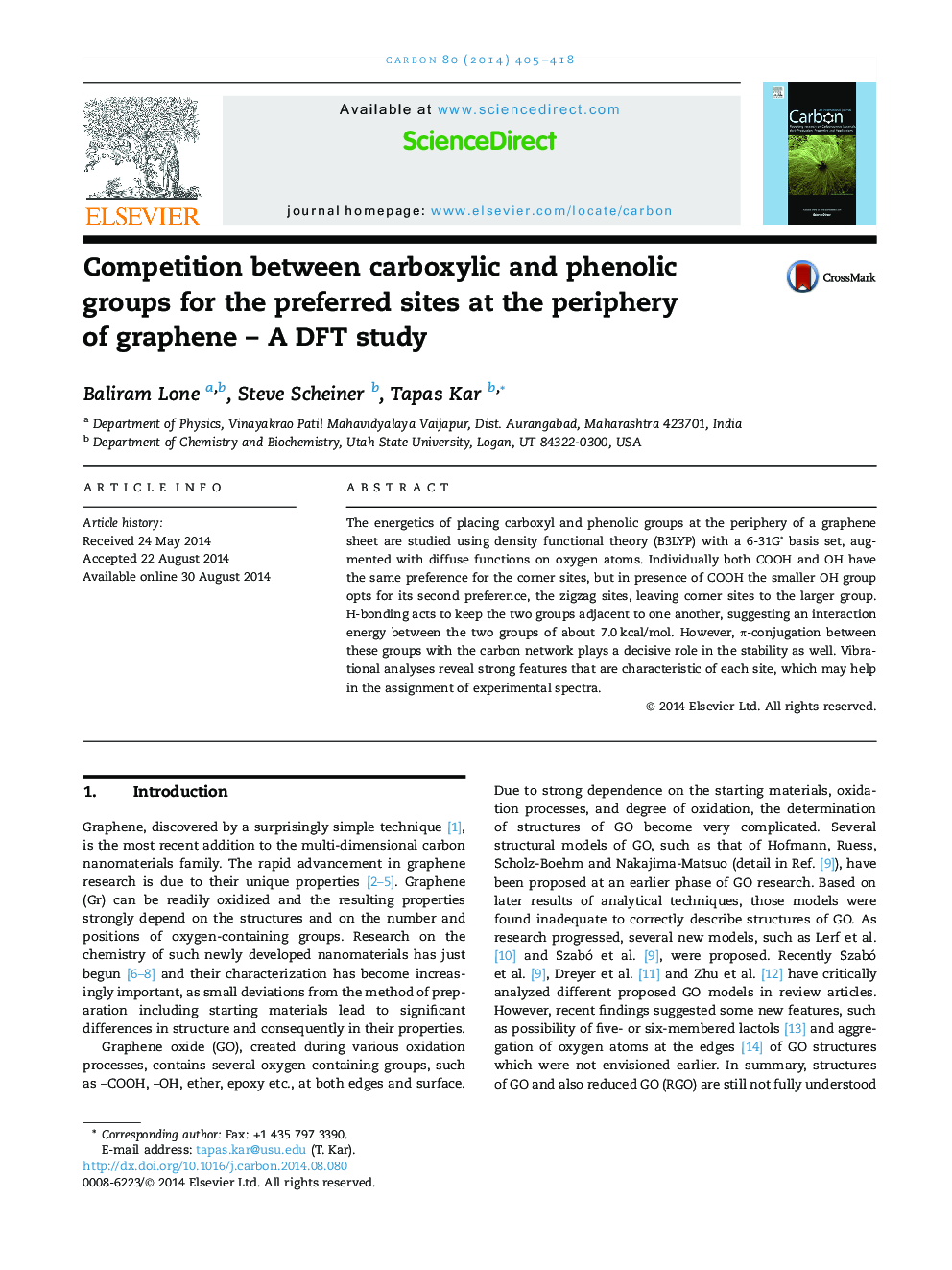| Article ID | Journal | Published Year | Pages | File Type |
|---|---|---|---|---|
| 1413738 | Carbon | 2014 | 14 Pages |
The energetics of placing carboxyl and phenolic groups at the periphery of a graphene sheet are studied using density functional theory (B3LYP) with a 6-31G∗ basis set, augmented with diffuse functions on oxygen atoms. Individually both COOH and OH have the same preference for the corner sites, but in presence of COOH the smaller OH group opts for its second preference, the zigzag sites, leaving corner sites to the larger group. H-bonding acts to keep the two groups adjacent to one another, suggesting an interaction energy between the two groups of about 7.0 kcal/mol. However, π-conjugation between these groups with the carbon network plays a decisive role in the stability as well. Vibrational analyses reveal strong features that are characteristic of each site, which may help in the assignment of experimental spectra.
